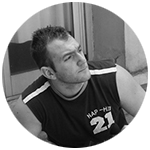Un utile alleato di selezione
Una maschera di colore consiste in una selezione di pixel dal frame basata sull’uniformità di scena (chroma). In molti casi, infatti, è utile estrarre alcuni oggetti evitando di ricorrere al rotoscoping. Il risultato dipende da diversi fattori: grana, qualità di sampling, condizioni di illuminazione, materiali degli oggetti ripresi e i soggetti stessi. E’ consigliabile usare questa tecnica quando i soggetti non sono molto in movimento e i materiali di scena sono opachi con pochi o zero riflessi. Quanto più è flat, meglio è, infatti l’influenza della luce va ad influenzare il keyer e la luce ne altera la cromaticità. Un buon metodo di selezione consiste nel selezionare un range di colori direttamente dal footage e poi selezionare un range affine di chroma per migliorare la selezione. E’ chiaro che la selezione può creare dei bordi molto seghettati, aliasing, modificabile mediante strumenti di blur ma chiaramente inefficaci se il footage è troppo rovinato. Una variazione eccessiva di colori e un sampling/grain errato possono confondere il keyer ottenendo risultati pessimi.
Cosa ce ne facciamo?
Beh i risultati possono essere vari ma l’idea migliore è usare questo tipo di selezione per modificare ad esempio la tinta di un oggetto. Un background di un oggetto uniforme può tranquillamente cambiare colore in pochi clic a patto che si controlli accuratamente tutto il processo nella sequenza. Nel mondo dei vfx, il tempo è davvero denaro e velocizzare quei processi tediosi è importante. Meglio dedicare più tempo a processi creativi e lasciare le scartoffie in mano agli algoritmi.
Extra
Le maschere di colore hanno una notevole utilità anche in zone con colori molto contrastati e uniformi. Sottrare il verde dal rosso, o il blu dal verde può portare a ottimi risultati di selezione.

















